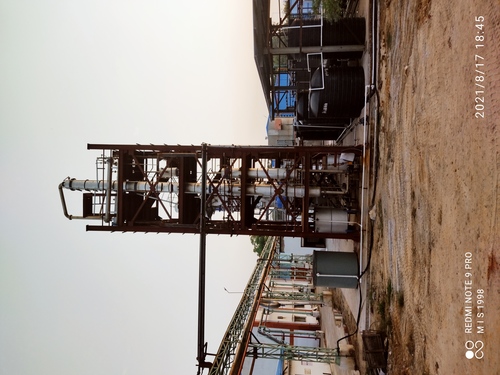
Solvent Recovery Plant
Product Details:
- Condition New
- Product Type Solvent Recovery Plant
- General Use Industrial
- Material Stainless Steel
- Automatic Yes
- PLC Control Yes
- Mixer Type Planetary
- Click to view more
Solvent Recovery Plant Price And Quantity
- 1 INR/Plant
- 1 Plant
Solvent Recovery Plant Product Specifications
- Industrial
- High Speed Low Energy Consumption Automatic Alarming Digital Time
- Customize
- New
- Electric
- Yes
- Solvent Recovery Plant
- Planetary
- Stainless Steel
- Yes
Solvent Recovery Plant Trade Information
- Cash Against Delivery (CAD) Cash in Advance (CID) Cash Advance (CA) Days after Acceptance (DA)
- 3 Plant Per Month
- 3 Months
- Australia South America Eastern Europe Africa Asia
- All India
Product Description
Solvent Recovery Plant is a large-scale industrial system that is designed for various industries such as pharmaceutical, chemical, cosmetic, and many more. It is used to remove unwanted substances such as oils, debris, soils, etc. from the chemical solvents to make them reusable. This unit greatly reduces the solvent purchasing cost of up to 95 percent. Solvent Recovery Plant can be used for various substances such as mineral spirits, acetones, paint thinners, hexane, petrochemicals, methyl ethyl ketone, and various types of alcohol.
A solvent recovery plant is a specialized facility designed to capture and recycle solvents used in various industrial processes. The primary goal is to recover solvents from waste streams, reducing environmental impact and operational costs. Here s a detailed description:
Components and Operation:
- Collection System:
- Feedstock Input: Waste streams containing solvents are collected from industrial processes. This could include spent solvents, solvent-laden air, or liquid waste.
- Pre-Treatment: Waste is often pre-treated to remove contaminants that could interfere with the recovery process.
- Distillation: The most common method, where waste solvents are heated to separate them from impurities based on different boiling points. The solvent vapor is then condensed back into a liquid form.
- Adsorption: Uses materials like activated carbon to capture and concentrate solvents from waste streams.
- Membrane Separation: Employs membranes to separate solvents from other components in the waste stream based on size or chemical properties.
3. Purification:
- Filtration: Removes any remaining solid impurities.
- Re-distillation: Further purifies recovered solvents to meet quality standards.
4. Storage and Handling:
- Storage Tanks: Recovered solvents are stored in tanks until they are needed for reuse or further processing.
- Quality Control: Regular testing ensures the recovered solvents meet required specifications for reuse.
5.By-Products Management:
- Residual Waste: Non-volatile residues from the recovery process are managed and disposed of according to regulations.
6.Control Systems:
- Automation: Modern plants use automated systems to monitor and control the recovery process, ensuring efficiency and safety.
- Data Management: Systems track solvent recovery rates, quality, and operational parameters.
Applications:
- Chemical Manufacturing: Recovers solvents used in chemical reactions and formulations.
- Paint and Coatings: Recycles solvents used in paint thinners and coatings.
- Pharmaceuticals: Extracts and reuses solvents in drug manufacturing processes.
- Printing: Recovers solvents used in inks and cleaning solutions.
Benefits:
- Environmental Impact: Reduces the release of solvents into the environment, decreasing pollution and compliance costs.
- Cost Savings: Lowers the need for purchasing new solvents and reduces waste disposal costs.
- Regulatory Compliance: Helps companies meet environmental regulations and standards.
- Considerations:
- Initial Investment: High setup and maintenance costs can be significant, although they are offset by long-term savings.
- Process Complexity: Requires expertise to manage and operate efficiently.

Price:
- 50
- 100
- 200
- 250
- 500
- 1000+



